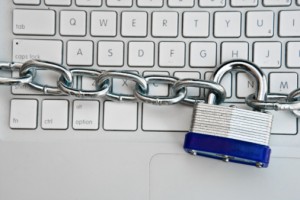 We know most schools block YouTube, Facebok, and social networking sites because of child protection laws. And we know students are unhappy about this.
We know most schools block YouTube, Facebok, and social networking sites because of child protection laws. And we know students are unhappy about this.
But we wondered what other sites that can potentially be rich educational resources were blocked from schools that filter the Web. We asked teachers and here's what we heard back.
- SKYPE. "I think this would be wonderful in the classroom," the reader says. She's right. Lots of teachers do use Skype to communicate with schools across the globe.
- NATIONAL GEOGRAPHIC. The "Kids" section alone provides a huge trove of beautiful presentations about wildlife, children's literature, and cultures around the world.
- GLOGSTER. Educators and students can use this collaborative digital media site to create everything from videos about American presidents to interactive economics quiz.
- DROPBOX AND OTHER FILE-SHARING SITES. An easy way to send files, homework, assignments, and projects back and forth between students and teachers.
- BLOGSPOT AND OTHER PERSONAL BLOGGING PLATFORMS. One teacher says his site is flagged as "porn," and another says her students use blocked access as an excuse not to do their homework. Class blogs -- most of them free and simple to set up -- are another great way for educators and students to communicate, participate in class discussions, and share information.
- KHAN ACADEMY. By virtue of the fact that the videos are hosted on YouTube, one teacher says none of these highly informative and engaging videos that describe everything from the Pythagorean Theorem to the cause and effect of the credit crisis, are available in her school.
- FLICKR. Want to show your photography teacher your photo assignment? Or participate in a collaborative project that includes photo-tagging? That's a rhetorical question in one teacher's case.
- FREEDOM TO TINKER. This site is "hosted by Princeton's Center for Information Technology Policy, a research center that studies digital technologies in public life. You'll find comment and analysis from the digital frontier, written by the Center's faculty, students, and friends."
Even the Department of Education realizes that blocked sites impede learning. Here's Karen Cator, the director of Education Technology at the D.O.E. in a recent MindShift interview:
"The bottom line is that we do need to figure out how kids can be safe and out of harm’s way and not exposed to inappropriate materials online. But the filtering programs we have are fairly rudimentary. We need more intelligent filtering programs, safer search environments, smarter technologies so that people aren’t just shutting down large swaths of the Internet. There’s a lot on YouTube, for example, that could be safe and really instructive, but since it’s just in one bucket, a lot of schools just shut down YouTube."
Frustrated educators are finding workarounds. Emma Dunbar, a middle school teacher in San Francisco, says she's lucky enough to have an LCD projector and an ELMO visual presenter.

